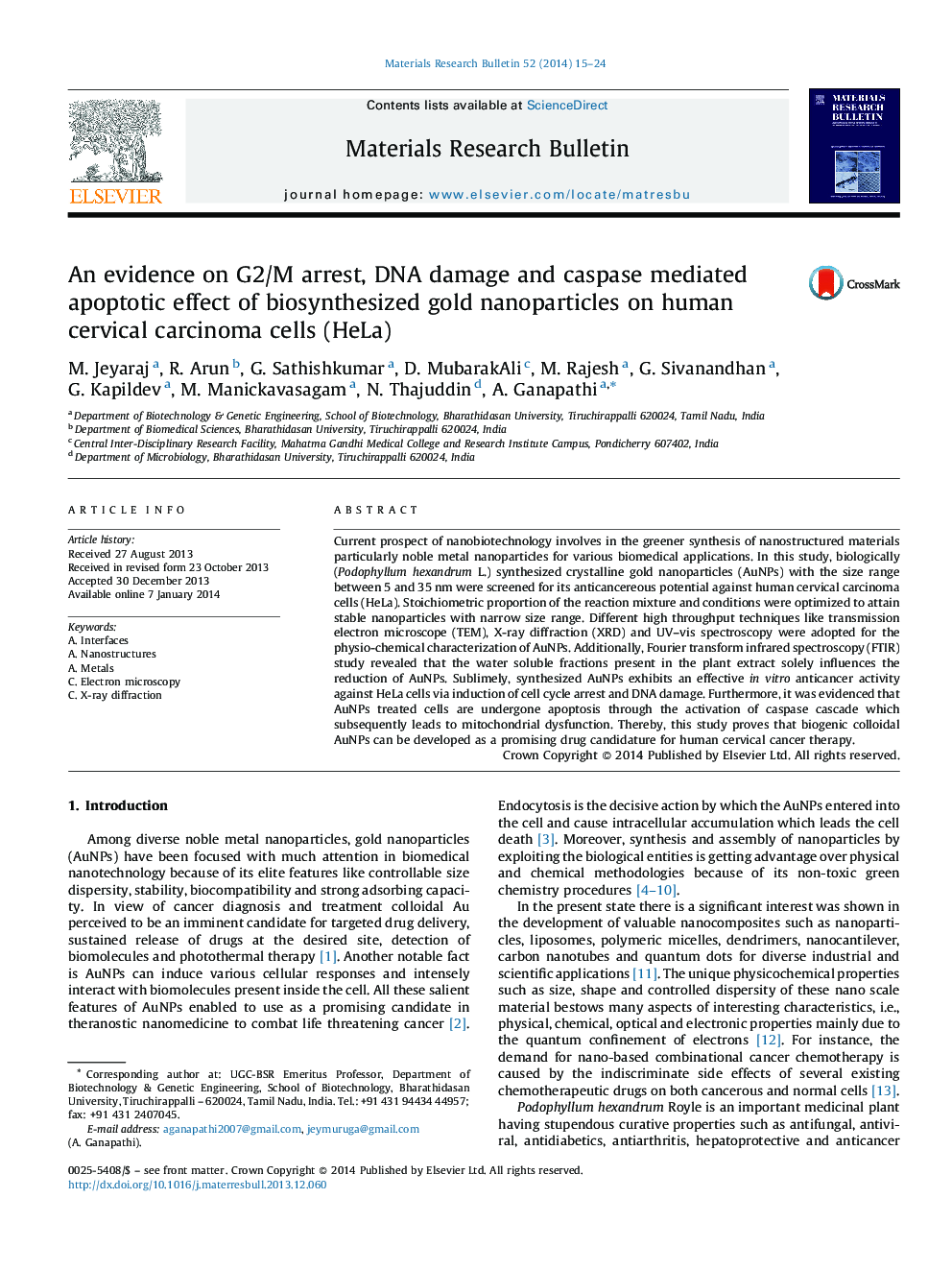| کد مقاله | کد نشریه | سال انتشار | مقاله انگلیسی | نسخه تمام متن |
|---|---|---|---|---|
| 1488445 | 1510723 | 2014 | 10 صفحه PDF | دانلود رایگان |

• Gold nanoparticles (AuNPs) have been synthesized using Podophyllum hexandrum L.
• AuNPs induces the oxidative stress to cell death in human cervical carcinoma cells.
• It activates the caspase-cascade to cellular death.
• It is actively blocks G2/M phase of cell cycle.
Current prospect of nanobiotechnology involves in the greener synthesis of nanostructured materials particularly noble metal nanoparticles for various biomedical applications. In this study, biologically (Podophyllum hexandrum L.) synthesized crystalline gold nanoparticles (AuNPs) with the size range between 5 and 35 nm were screened for its anticancereous potential against human cervical carcinoma cells (HeLa). Stoichiometric proportion of the reaction mixture and conditions were optimized to attain stable nanoparticles with narrow size range. Different high throughput techniques like transmission electron microscope (TEM), X-ray diffraction (XRD) and UV–vis spectroscopy were adopted for the physio-chemical characterization of AuNPs. Additionally, Fourier transform infrared spectroscopy (FTIR) study revealed that the water soluble fractions present in the plant extract solely influences the reduction of AuNPs. Sublimely, synthesized AuNPs exhibits an effective in vitro anticancer activity against HeLa cells via induction of cell cycle arrest and DNA damage. Furthermore, it was evidenced that AuNPs treated cells are undergone apoptosis through the activation of caspase cascade which subsequently leads to mitochondrial dysfunction. Thereby, this study proves that biogenic colloidal AuNPs can be developed as a promising drug candidature for human cervical cancer therapy.
Figure optionsDownload as PowerPoint slide
Journal: Materials Research Bulletin - Volume 52, April 2014, Pages 15–24